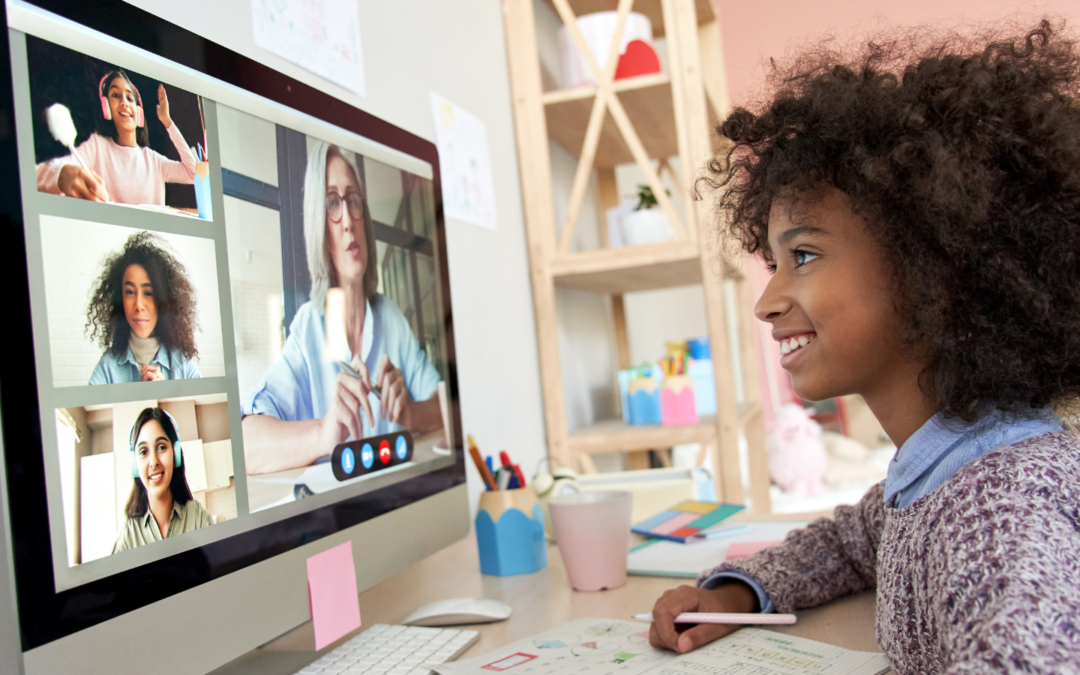The rise of Zoom and similar platforms during the Covid pandemic is transforming aspects of both work life and personal life in ways most of us never expected. We see employers hiring talent from distant time zones with no expectation that their new team members will relocate, while college friends who might have gathered once a decade for reunions now reconnect every month virtually. It should be no surprise then that new possibilities for virtual interaction would have an impact on the way campaign teams develop and share case statements.
This was the topic Schultz & Williams explored in a case study at this year’s Bridge Conference in Washington, along with S&W client Geof Follansbee, Senior Vice President and Chief Advancement Officer at the Chautauqua Institution. A mecca for arts, culture, and the exchange of ideas, Chautauqua has drawn thousands to its campus in Western New York each summer for nearly 150 years.
As it happens, Chautauqua was engaged in planning and early solicitations for a roughly $150 million campaign just as Covid struck. In response, the Chautauqua and S&W teams, collaborating with designer Alex Isley, developed a campaign case statement in digital form—an experience that revealed some of the possibilities this approach offers and that hints at the impact digital cases might have even as Covid—we hope—recedes into the background.
“Not Just Business as Usual”
The digital case project got its start as the Chautauqua development staff planned early-stage donor cultivation with colleagues from S&W. It became clear that having some version of the case as a send-ahead or leave-behind would help prospective donors feel more oriented—just as if conversations were taking place in person. It also became clear that a printed document would be less than optimal. Gift officers imagining the prospect of “sitting down” with donors across hundreds of miles rather than in-person wanted a tool that would do more to generate interest and excitement, while Follansbee hoped for a case in a format that would send a message: “When you are a 150-year-old institution launching a campaign to implement a visionary strategic plan, as we are, you want to present your case in a way that signals to your stakeholders that this is not just business as .”
With that desire in mind, the partners in the project launched an exploration to find the right solution, sketching out preliminary content while seeking out a workable technical platform to present that content powerfully.
In the end, the solution that emerged as optimal was a web-based presentation featuring select multimedia elements. These included animated graphics and short video segments, embedded throughout, in which members of the extended Chautauqua community shared their thoughts on each of the key priorities the campaign will fund—from a new landmark building to a program of national outreach, to research to save an endangered Chautauqua Lake.
Unlike a campaign website, the Chautauqua case has no home page or branching sub-pages. Instead, it is mainly structured as an extended vertically scrolling narrative—like a home page that keeps unfolding and evolving from the beginning of the story to the end. The one exception to this pattern is a series of side-linking destination pages called Spotlights that provide the chance to zoom in on major projects, developing a brief “mini-case” for each.
Lessons Learned
As Chautauqua has rolled out its new digital case in conversations with individual donors and to groups such as the campaign cabinet, reaction has been extremely favorable—as it was from the Bridge Conference audience.
“We’ve heard a lot of positive feedback,” Follansbee agrees, “and nothing substantive in the way of criticism—including from more traditional donors we might have thought would be hesitant to embrace this.” It should be noted that just in case gift officers encounter such individuals, the digital case has been adapted into a print version.
As the case has continued to roll out, the partners in the project have had the chance to reflect on lessons learned, including the following:
A Case is Still a Case—Much about Chautauqua’s digital case might feel unfamiliar, but at its heart this innovative campaign communication expresses the same content key to the success of a more conventional campaign case statement. It reminds donors what is special about Chautauqua and compelling about its mission; it states a bold vision for the years to come; and it presents the priorities to be funded clearly and accessibly, articulating the positive impact that donor support for each will have.
Brevity Counts—In planning the content for the case, the team was acutely aware that readers might not devote themselves to digesting as many words on screen as in print. Accordingly, they presented nearly all key points in the form of accessible bulleted entries, with the longest paragraphs in the piece containing only two or three sentence. The readability of the result suggests that campaign communicators would do well to consider these formatting approaches and to exercise this kind of discipline in terms of copy counts even when working in print.
Be Clear on Best Uses—Because Chautauqua’s case is an on-screen communication, some staff and volunteers initially expected it was created to present to donors—as one would a PowerPoint. In fact, the case is intended to support live interaction with donors, not to replace these conversations with a one-way narrative. In this regard, the digital case is very much like a printed counterpart. A major gifts officer might refer to a page in a printed case while talking, might send it in advance of a meeting, or leave it behind, but he or she would never read the document to a donor. The same is just as true when the document happens to be digital.
One other lesson learned relates to some of the practical advantages the digital approach offers, especially for a case rolled out early in the life of a campaign. “Because we haven’t printed 20,000 copies of this,” Follansbee explains, “we can continue to fine tune the content over time at very little cost. We were also able to ‘publish’ a first version of the case sooner than if we were committing to print.”
Looking Forward
As of this writing, it seems possible that life may be returning to normal in some important ways. Chautauqua, for instance, was able to welcome audiences to its grounds once again for a live and in-person 2022 summer season. And, in many cases, donors are now open to welcoming gift officers into their homes for in-person meetings.
We realize, however, that Zoom meetings will likely remain a common meeting format going forward—and will be the preference of some donors. We also see that even when meetings can happen face-to-face, digital cases have a lot to offer, from the impact of multi-media content to the practical advantages Follansbee cites in comparison to the less flexible option of print.
The consensus that emerged in our conversation at the Bridge session was that digital cases will play a part in many campaign communications programs going forward and that we will continue to discover exciting new creative and technical possibilities as we build on the success of early efforts like Chautauqua’s.




